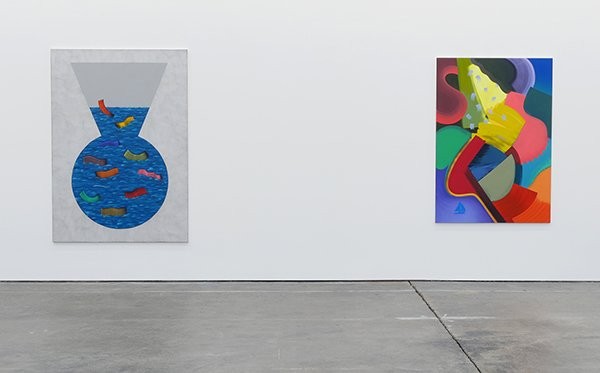Interview with Claudia Altman Siegel
Interested in art since she was a little kid, Claudia Altman-Siegel opened her gallery in 2009 after moving from New York to San Francisco. Since then she has established a space that brings new artists to San Francisco, aiming for a primary art experience: A “creative outlet”, like Claudia Altman-Siegel calls the gallery herself.
Tell us a bit about the origins of your gallery. What led you to open your own gallery?
In 2007 I felt restless in New York and decided to move to San Francisco. I had worked for 10 years as the Senior Director of Luhring Augustine and I wanted to do my own thing and I wanted to see what life outside of New York was like.
When I got to San Francisco, I found a small but dedicated art scene of great artists, collectors and museums, but very few international galleries. It seemed like I could open a space and be able to contribute to the community in a meaningful way.
What brought you into contemporary art in the first place? What is your background?
I was always interested in art since I was a little kid. I took Saturday art classes at the museum every weekend and I saw every show. I went to Columbia to study art history.
After graduating, Michele Maccarone, who was then the director, hired me as a security guard at Luhring Augustine for one show. While I was there a job opened up and they hired me full time. After two years I was a director working with Christopher Wool, Rachel Whiteread, Albert Oehlen and other amazing artists of their program at that time.
In 2016 your gallery moved to a new location. Why did you choose this neighborhood and this building?
There is a real estate crisis in San Francisco because well funded tech companies have been expanding all over the city. Galleries, artists and other small businesses are being displaced and evicted and cant find new locations because rent is so expensive. They just cant compete with the start-ups and are leaving or going out of business.
Two years ago, I was approached by Andy and Deborah Rappaport, who are great philanthropists and art collectors. They had invested in several warehouses in the Dogpatch which is an industrial neighborhood, and were interested in leasing them out specifically to galleries and artists in order to help support the art scene in SF. They showed me a 16,000 sq ft warehouse and asked me if I wanted to move and help them develop the building and I jumped at the opportunity.
The new gallery is 5000 sq ft and I have two neighbors in the building. Adrian Rosenfeld, the former director of Matthew Marks, who moved here from LA and a private collector who is opening a non-profit foundation in September.
How has the art scene in San Francisco developed since you have been working in it?
Generally San Francisco has gotten a lot busier and wealthier. It feels a lot less provincial and more international. In the art world, there has been a generational shift since I have been here. Many of the patrons of the arts are younger. The younger galleries are becoming more established and important.
What is the program of your gallery? What connects the artists you represent?
I am very interested in ideas. Obviously, I want the artwork to look good, but I am more interested in what the artist is thinking about, and then how they express that aesthetically. I think the most rigorous artists work through the same idea or sets of ideas for years and build an aesthetic vocabulary which they can use to describe these concepts in different ways.
How do you decide to add a new artist?
There are a lot of factors that go into this. I personally have to be a fan of both the artist and their work. And then their work has to make sense in the program. The program of the gallery is a creative outlet for me and I enjoy putting it together.
If you could choose to exhibit any artist, even from the past, who would you pick?
Lee Bontecou, Eva Hesse and Claude Monet
How do you see the role of a gallery today?
In a time when most art is consumed online and at art fairs, I think it’s more important than ever to provide a place where you can still have a primary art experience and see an exhibition organized as the artist intended it. Especially in San Francisco, where there are fewer venues, it feels important to provide a space to see new artists and bodies of work in person.
What exhibitions or projects do you have planned in the months to come?
My next show is a video show by British artist Emily Wardill. We are taking her solo museum show from the Kunsthall Bergen and bringing it to San Francisco.
Over the summer I will work with David Lewis who is curating a show based on Fred Turner’s book From Counterculture to Cyberculture. It examines how utopian ideas popularized in the 60s have filtered into cyberculture and created a space many younger artists are mining for their work. It will include work by Lucy Dodd, Jared Madere, KRM Mooney and their historical precedents.
And finally, how do you see your gallery in a decade?
I hope that the younger artists that I am working with, will mature and continue to be as busy if not busier than they are now.
